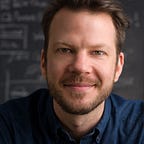Sol LeWitt and the Canon of Conceptual Art
Today, September 9, 2023, on what would have been Sol LeWitt’s birthday, I wanted to recognize the perspective shifts initiated by this luminary. In a five hundred word essay I can only scratch the surface of LeWitt’s oeuvre and so I want to focus on how his ideas have practical, philosophical implications that continue to resonate in a world driven by abstraction and information. Understanding LeWitt’s influence is a lesson in how art evolves as an intellectual canon, much like science or music. This canon informs various disciplines and invites contributors across generations to redefine its boundaries.
Redefining the Aesthetic Paradigm: Concept over Craft
In the mid-20th century, the approach to art generally focused on the lens of formalism, a paradigm focusing on aesthetic elements like color, form, and texture. However, LeWitt’s groundbreaking conceptualism shifted this emphasis toward the realm of ideas. For him, the genesis of art resided in the “concept,” reducing the physical artwork to a mere byproduct, a ‘residue,’ of the intellectual process. This deconstruction of traditional definitions was not just provocative but democratically subversive, destabilizing hierarchies of skill and access in art-making.
Algorithmic Art: Pioneering Open-Source Creativity
LeWitt also introduced the world to the idea that art could exist as a set of instructions. Here, the artist functioned less as a unique creator and more as a designer of experiential algorithms, democratizing artistic creation. Through the interpretation of these precursors to code, the audience became active collaborators. This innovative approach foreshadowed the open-source culture now ubiquitous in the digital realm. Here is an example of these instructions called “Sentences on Conceptual Art” published in 0 to 9 magazine in 1969.
The Academic and Multidisciplinary Offshoots
LeWitt’s ripple effects are felt not merely in art per se but also its theoretical study and its intersection with other disciplines. Academically, he provided fertile ground for inquiry into semiotics, epistemology, and even ontology. Practically, artists from various spheres, including text-based artist Jenny Holzer and installation artist Olafur Eliasson, owe a debt to LeWitt’s broadening of what could be considered ‘art.’
The Dialogical Nature of Art
Engaging with LeWitt’s ideas is an exercise in recognizing that art is an ongoing dialogue, a continuum in which each contribution expands its peripheries. A particularly salient example is “The Present,” a timepiece harmonizing our understanding of time with natural, cyclical processes. Much like how evolution of conceptual art prompts us to reconsider its own nature, “The Present” challenges our experience and perception of the nature of time. It serves as an apt metaphor for what conceptual art can do: not just represent the world differently but help us live in it more thoughtfully.
Concluding Thoughts
Sol LeWitt wasn’t just an artist but a visual experience philosopher. His influence extends beyond galleries and textbooks, infusing diverse creative and intellectual pursuits. The value in understanding his impact lies in appreciating art as an evolving canon of ideas, a dialogical space open to reinterpretation and redefinition. On LeWitt’s birthday, we celebrate his contributions and acknowledge the ever-expanding canon of art that continues to enrich our perception today.
